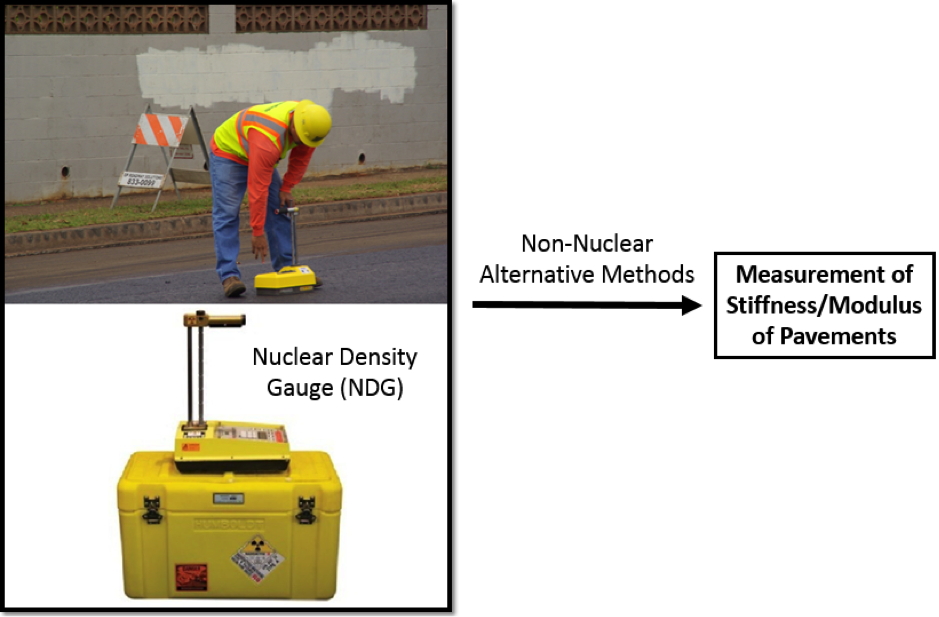| |
Title |
| |
|
Alternatives to Nuclear Density Testing
|
| |
| |
Participants |
| |
|
- Huiming Yin
- Gisele G. Ribeiro (Ph.D student)
|
| |
Project Quad |
| |
|

|
| |
| |
Summary/Objectives |
| |
|
The goal of this project is to identify, develop and evaluate some (non-nuclear) alternative methods to the Nuclear Density Gauge (NDG) to assure the performance of asphalt pavements with appropriated process and quality control. The New Jersey Department of Transportation (NJDOT) and many others currently use the NDG as a primary tool to obtain the pavement material density and for acceptance of soil aggregate and quarry processed aggregate compaction. However, the nuclear density method has two major disadvantages. The first one is that because of its radioactive source that might represent potential hazard, the nuclear device requires regulations for transportation, usage and storage, which makes the method expensive and demands specific training to users. The second disadvantage is that the NDG provides a reading of density which is not a fundamental engineering property of the material like the stiffness/modulus. Therefore, this research is engaged in evaluating, choosing and testing non-nuclear alternative methods that provides information about the stiffness/modulus of the asphalt pavement, taking a step forward to improve its acceptance by substituting the NDG that has been used presently by many.
|
| |
| |
Approach |
|
|
A total of 3 phases are proposed as the work plan of this project:
|
| |
|
- Phase 1 (Determine State of Practice): includes a literature review of current practices/experiences with non-nuclear devices and a brief survey to be sent to DOT’s, manufactures and contractors, so they can evaluate and determine some problems to the use of nuclear and non-nuclear devices in highway construction. After that, based on the survey and the literature review, it will be possible to provide the most appropriated non-nuclear methods to be used for the next phases.
- Phase 2 (Lab and Field Evaluation): execution of laboratory and field testing of soil materials and dense-graded aggregate (DGA) using NDG and the non-nuclear devices chosen. Also, the appropriated analysis of the results will be done to determine the accuracy, cost, speed and other factors of each device to be compared to the NDG results.
- Phase 3 (Implementation Plan): after the performed experiments (phase 2), the test methods and specifications will be revised and a final report will be developed to document the step-by-step, the difficulties and the findings of this research project.
|
| |
| |
Results |
| |
|
- Comprehensive evaluation of state of practice
- Laboratory evaluation of the soil and DGA density/modulus at various moisture contents and compaction levels for NDG and non-nuclear methods
- Preliminary field evaluation of the non-nuclear methods considering the environmental conditions and establishing speed, accuracy and precision when compared to NDG
- A comprehensive comparison (considering various factors) between the NDG and the non-nuclear alternative methods that will be used in this research
- A draft acceptance methodology will be prepared and the best non-nuclear devices will be selected for implementation evaluation and for the final report.
|
| |
Publications |
| |
|
- H.M. Yin, Z.R. Luo, Investigation of the nuclear gauge density calibration method, Road Materials and Pavement Design, 10, 625-645, 2009.
|
| |

